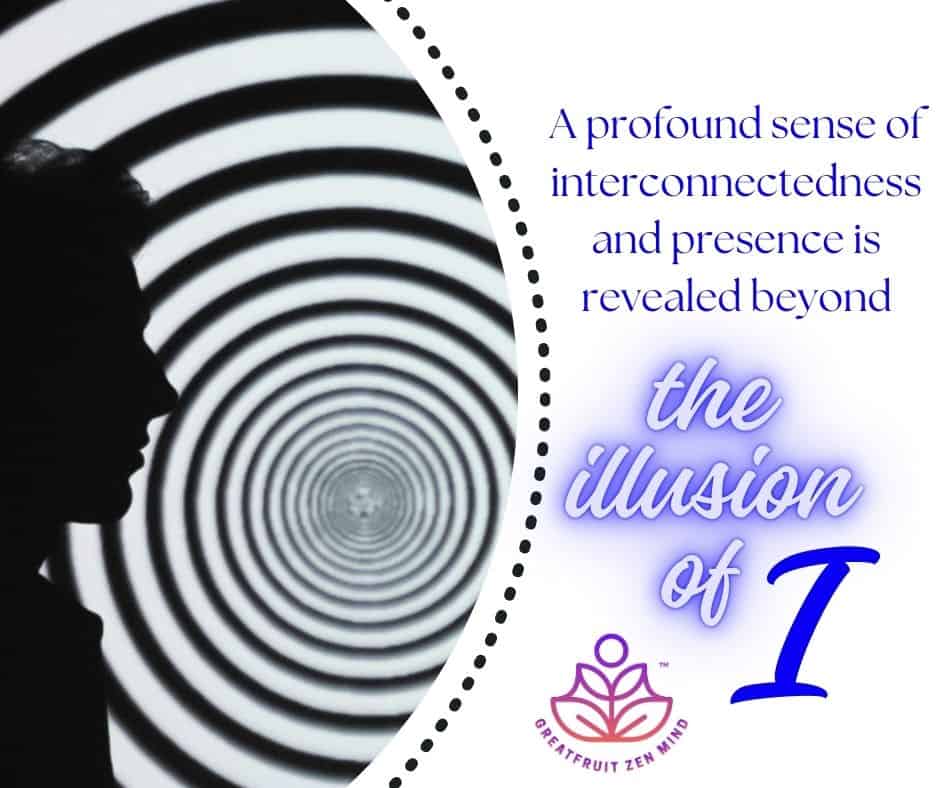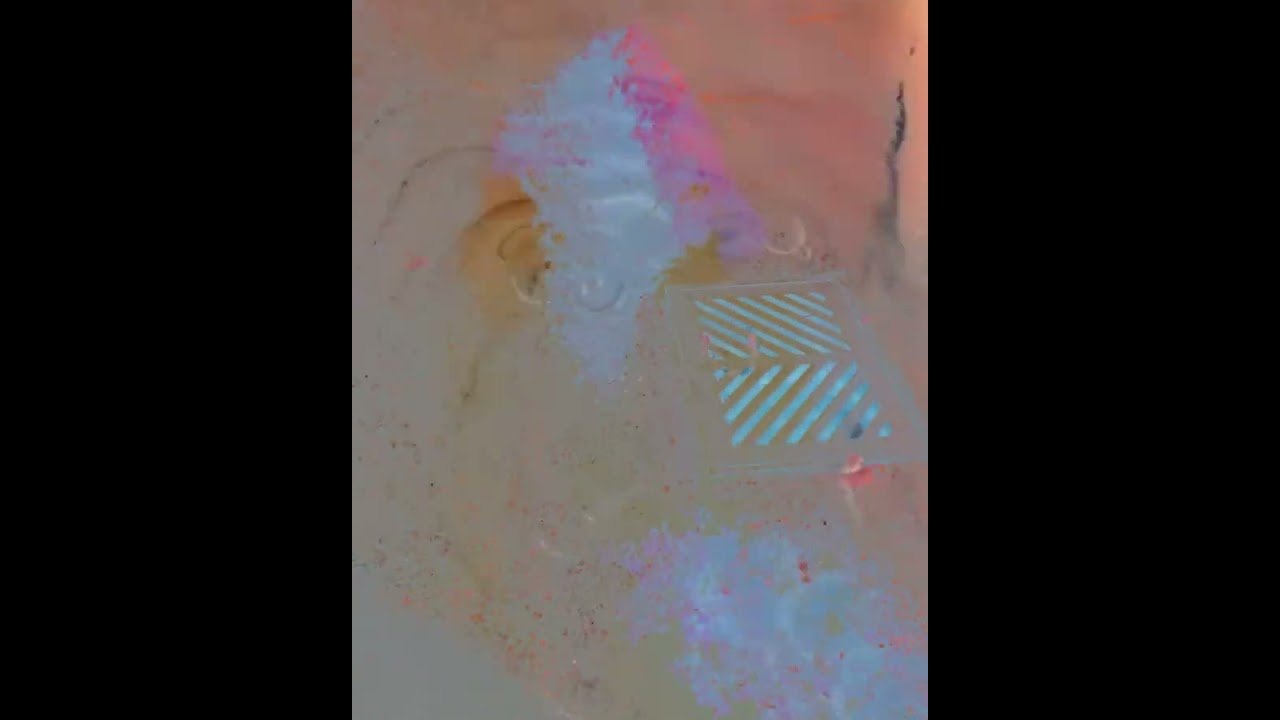Read time 5 minutes. The attached video opens with a quote from One Dharma by Joseph Goldstein: “Thoughts themselves are the thinker.” The Illusion of I is a stand alone article in our Who Am I series.
At first glance, this statement is almost disarming in its simplicity. But if we sit with it, the implications unravel the very core of what we call self.
Thoughts arise on their own, unbidden. They appear in the mind like weather through the sky. Yet, for reasons never entirely clear, this automatic process convinces us that we are the source of those thoughts. We begin to believe that they are inherently tied to a permanent self, and from there we construct the illusion of I. But in truth, thoughts are simply phenomena passing through the field of mind. They can be observed without identification.
Where do we find this Illusion of I?
If we go looking for the self in thoughts, where will we find it? If we search for it in the mind, where will it rest? We want to pin it down, to define it precisely. But this is not the nature of reality.
Just as thoughts arise within the field of mind, all of existence arises within the field of conscious awareness. Everything is witnessed by this awareness. At best, this is all we can say of our true self—and perhaps even this is saying too much.
Chögyam Trungpa once wrote: “We can read about (the concept of a false, separate self,) think about it, but when we actually suffer, can we remain indifferent? Of course not, suffering is stronger than our petty opinions. A true understanding of egolessness cuts through opinion. The absence of a notion of egolessness allows us to fully experience pain, birth, and death because then there are no philosophical paddings.”
Drop all reference points
Trungpa continues: “The whole idea is that we must drop all reference points, all concepts of what is or what should be. Then it is possible to experience the uniqueness and vividness of phenomena directly. There is tremendous room to experience things, to allow experience to occur and pass away. Movement happens within vast space. Whatever happens… (is) experienced completely, without philosophical overlays or emotional attitudes to make things seem loveable or presentable. We are never trapped in life because there are constant opportunities for creativity, challenges for improvisation. Ironically, by seeing clearly and acknowledging our egolessness, we may discover that suffering contains bliss….”
This is the paradox: liberation is not in explaining or categorizing life, but in experiencing it directly—without overlays, without reference points.
Discovering the true self and our true home
Eastern teachings often remind us: “You are not a personal being having a spiritual experience. You are a spiritual being having a personal experience.” If we take this seriously, then our true self transcends daily events, and our true home is equally transcendent. Manifestation is nothing more and nothing less than the transcendent at play.
We might visualize this through the metaphor of an event horizon. On one side: Tao in its unmanifest, undifferentiated form. On the other: Tao in its manifest, dualistic, experiential form. Failing to comprehend this split gives rise to the illusion of I.
Here, humor can illuminate. In a sketch by The Kids in the Hall, a man locked outside proclaims: “Okay, from now on the outside of the house is the inside of the house, and the inside of the house is now the outside.” Or recall the Wizard of Oz: “Pay no attention to that man behind the curtain!” If only realization were that simple. The illusion of I is far more persistent.
The illusion of I: What’s behind the curtain?
Manifest reality is indeed happening—it is simply not happening in the way we assume. Our thoughts, emotions, and experiences all arise from the emptiness of Tao. Together, they collaborate in constructing and defending a false identity: a separate I that instantly divides the world into me and other.
The ego clings, protects, defends. It draws boundaries around what is mine. In this grasping, the illusion deepens. But by seeing the process clearly, we loosen its grip.
Cultivating awareness instead of illusion
The benefit of understanding all this is not merely intellectual. It inspires practice. Rather than feeding the illusion of I, we cultivate awareness itself. Awareness leads naturally to detachment.
Here, at last, the Wizard’s curtain falls. The machinery of the false self is revealed. What remains is not a fortified identity, but a quiet field of presence.
And so, as Dorothy finally realized, there’s no place like home.
Explore more:
In his book One Dharma, Joseph Goldstein encourages us to see past the rigid dogma of some teachings in order to find the underlying themes that resonate through all of them. In this interview on Inquiring Mind, Goldstein discusses what has been, perhaps, his greatest revelation.
“When people ask me now what I practice—is it vipassana or dzogchen?—I say that it is ‘not-clinging.’ The practice has become that simple: not-clinging, and then moments of recognizing clinging, and then not-clinging, and so on. The particular method of doing that practice may be constantly changing: sometimes it will feel appropriate to stabilize the mind on the breath; at other times it will feel right to rest in a more open, empty awareness; sometimes it will feel right to open up the energy of the body through the sweeping technique. The practice is guided intuitively, and it’s seamless, totally seamless.”
Acceptance ends confusion because it helps us to let go of attachments. So what does this have to do with our current topic of coming to know our true identity as Tao? Goldstein also references the teachings of the Buddha—Nothing whatsoever is to be clung to as I or mine. Whoever hears this has heard all the teachings, whoever practices it has practiced all the teachings, whoever realizes it has realized all the teachings.
“What emerges in the end is a tremendous simplicity.”
–
Want more Zen practices or the occasional lighthearted, fun or thoughtful dispatch? Join The Undercurrent and stay connected.
🌀 From the GZM Archives – Polished, Preserved, Still Relevant



Leave a Reply